
As APEC and the rest of the world continue to face uncertainty, the path forward hinges on adaptive policies, resilient frameworks, and deeper regional cooperation to reignite momentum. Growth has slowed despite early trade gains, yet new opportunities are taking shape, driven by the transformative potential of artificial intelligence (AI) and structural shifts toward productivity-enhancing sectors.
Cooling Growth, Lingering Risks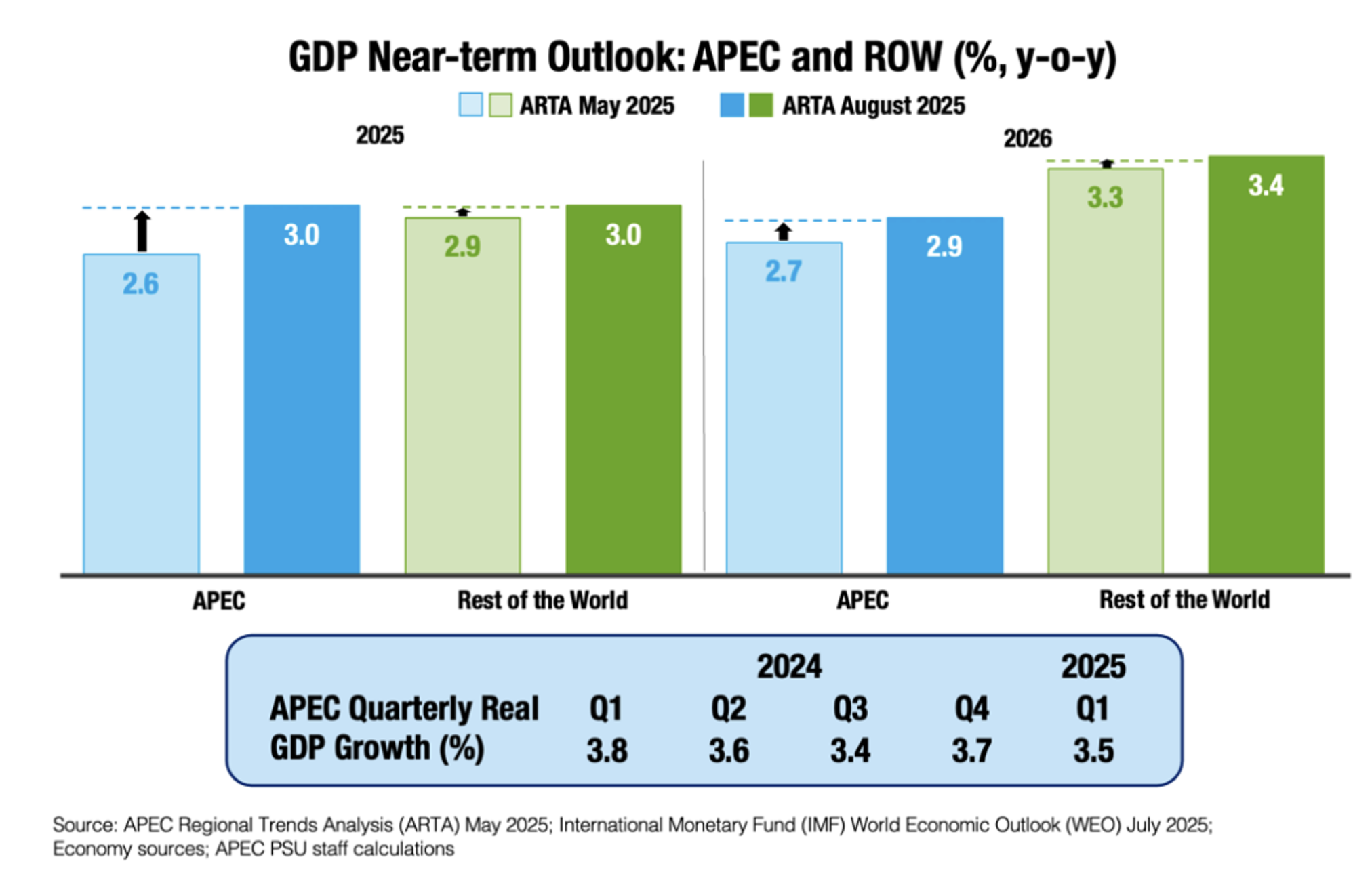
APEC's growth slowed to 3.5 percent in the first quarter of 2025, down from 3.8 percent a year earlier, reflecting weaker demand and heightened global uncertainty. Early trade gains, driven by businesses rushing to ship goods before new trade restrictions take effect, gave the economy a short-term boost. However, sustained momentum requires consistent reforms and renewed investment in productivity.
Regional growth is now projected at 3.0 percent in 2025 and 2.9 percent in 2026, slightly above the May 2025 APEC Regional Trends Analysis forecasts, but trailing behind the rest of the world, which is expected to grow by 3.4 percent in 2026. Despite the emergence of new technologies and the relative resiliency of greenfield investments in productivity-enhancing projects, downside risks are expected to dominate, marked by policy uncertainty, geopolitical tensions, and elevated debt levels as legacy from the pandemic.
Central Banks Balance Support and Stability
Inflation averaged 2.5 percent across APEC in the second quarter of 2025, lower than a year ago and easing pressure on households and businesses. In response to downside risks, the majority of central banks have trimmed policy rates to help spur economic activity. Other APEC economies have kept their policy rates unchanged, maintaining a cautious stance amid potential price pressures and external shocks.
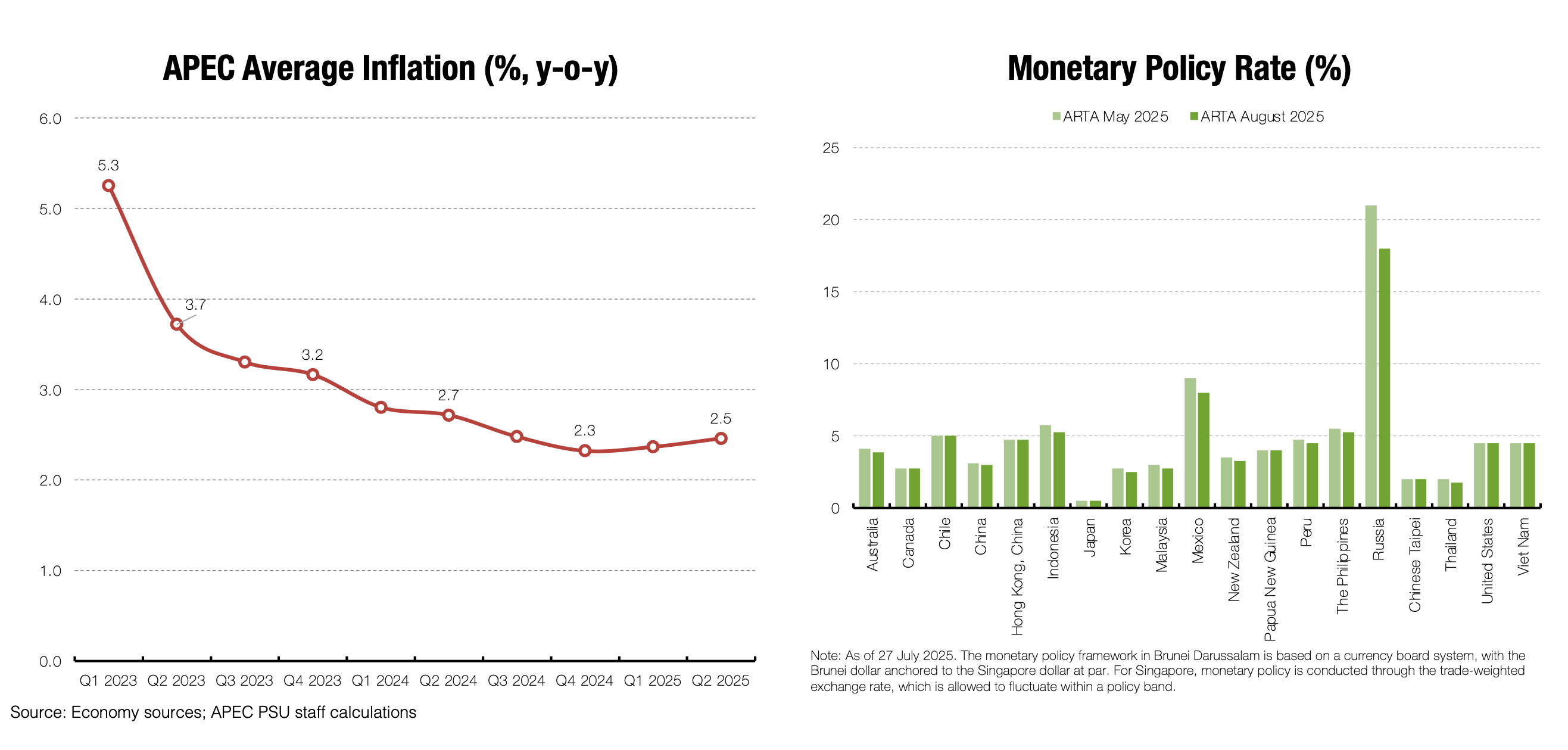
In recent months, oil prices edged higher as energy markets responded to shifting supply dynamics amid geopolitical instability. In contrast, food prices remained broadly stable, reflecting mixed movements across key commodity groups.
Trade Gains Reflect Precautionary Activity
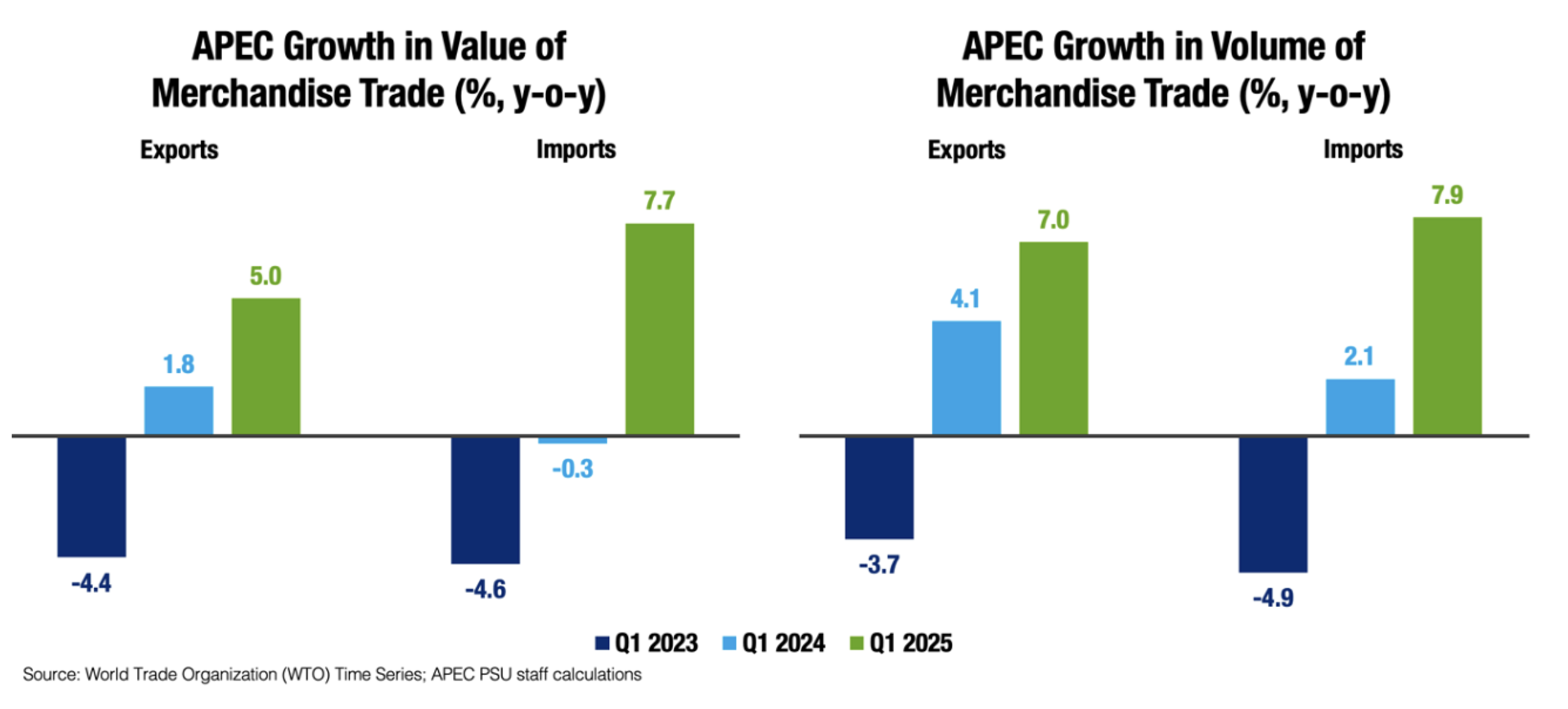
Merchandise trade in APEC posted solid growth in the first quarter of 2025 as businesses moved shipments forward, hedging against possible new trade restrictions. Export and import values rose by 5.0 percent and 7.7 percent, respectively, while volumes climbed even faster, by 7.0 percent and 7.9 percent. This expansion suggests that early-year trade gains were driven by risk-mitigation strategies rather than a sustained rebound in demand, and may taper off as temporary factors fade. Trade momentum remains highly sensitive to policy developments.
Services trade told a different story. Export growth slowed to 6 percent in the first quarter of 2025 from 11 percent a year earlier. Travel services exports contributed to the decline as it decelerated sharply to 9 percent from 30 percent over the same period even as transport and other commercial services increased.
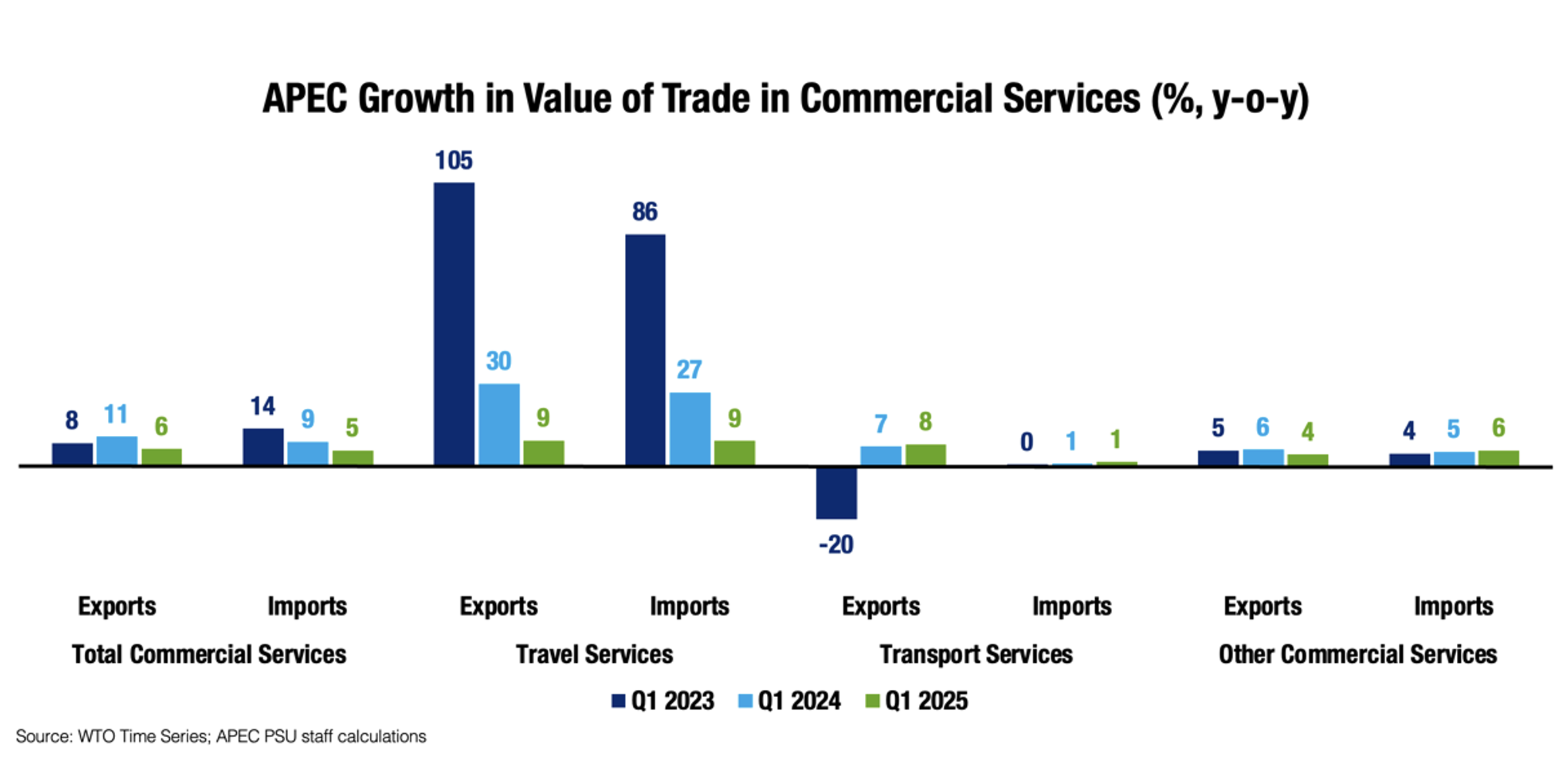
Trade policy uncertainty, although easing from earlier peaks as negotiations gain traction and trade deals begin to take shape, has remained well above historical norms. In fact, financial markets reflect amplified investor concerns, with gold prices near record highs and demand for safe-haven assets is strong.
Emerging Opportunities: Resilient Greenfield Investments and AI Potential
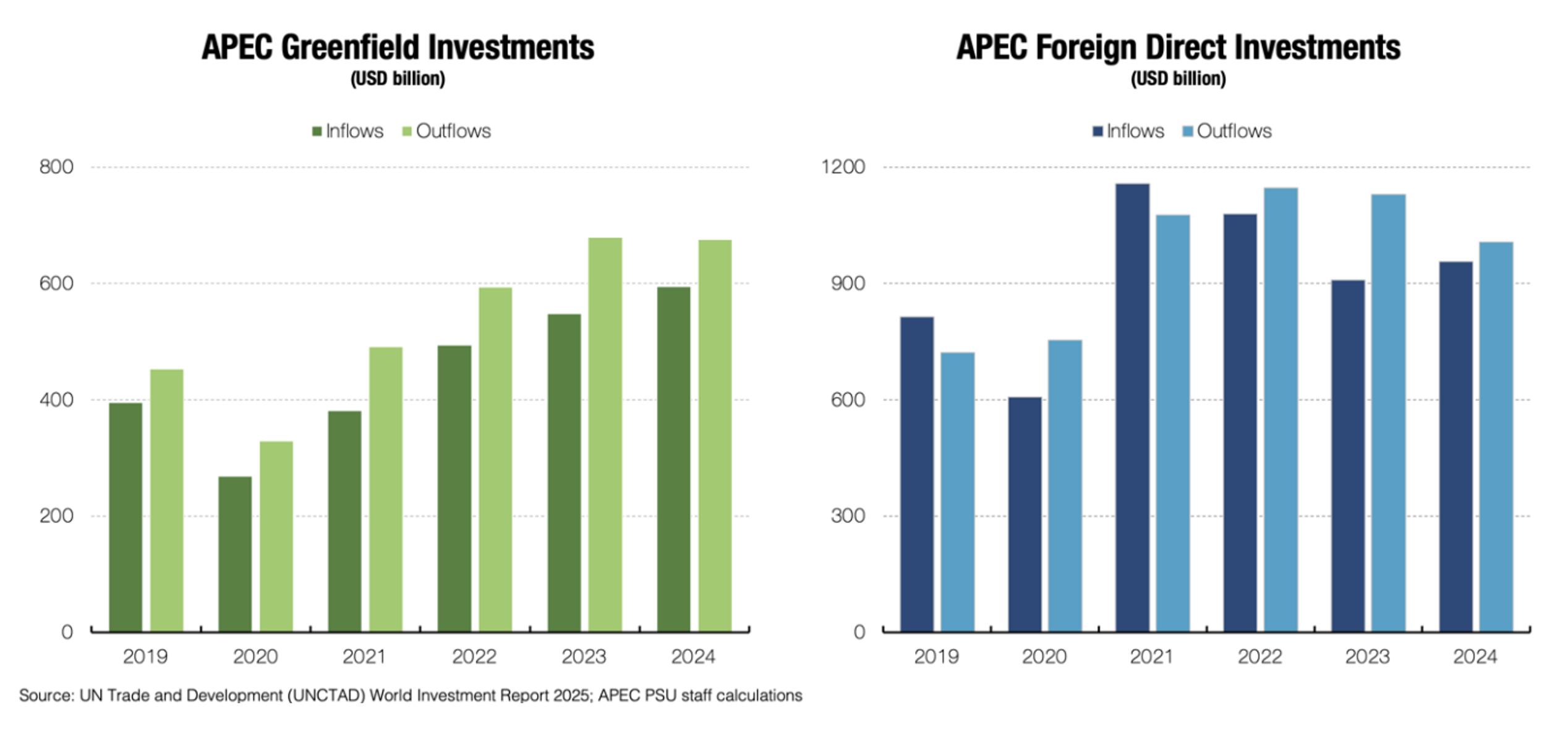
Although FDI inflows have moderated, falling from USD 1,157 billion in 2021 to USD 956 billion in 2024, greenfield investment remains a bright spot. Announced greenfield projects in APEC reached USD 595 billion in 2024, up 56 percent compared to the level in 2021, underscoring investor confidence in new capacity and innovation. Sustained investments in innovation and digitalization signal an ongoing shift toward productivity-enhancing sectors, which bodes well for APEC's growth trajectory.
Digital technologies, particularly artificial intelligence (AI), are poised to amplify these gains. Modelling estimates suggest that, when treated as a productivity shock, AI adoption could raise GDP by 1.3 to 3.9 percent. On average, APEC economies already score above global averages on AI readiness, highlighting strong potential to capture digital dividends.
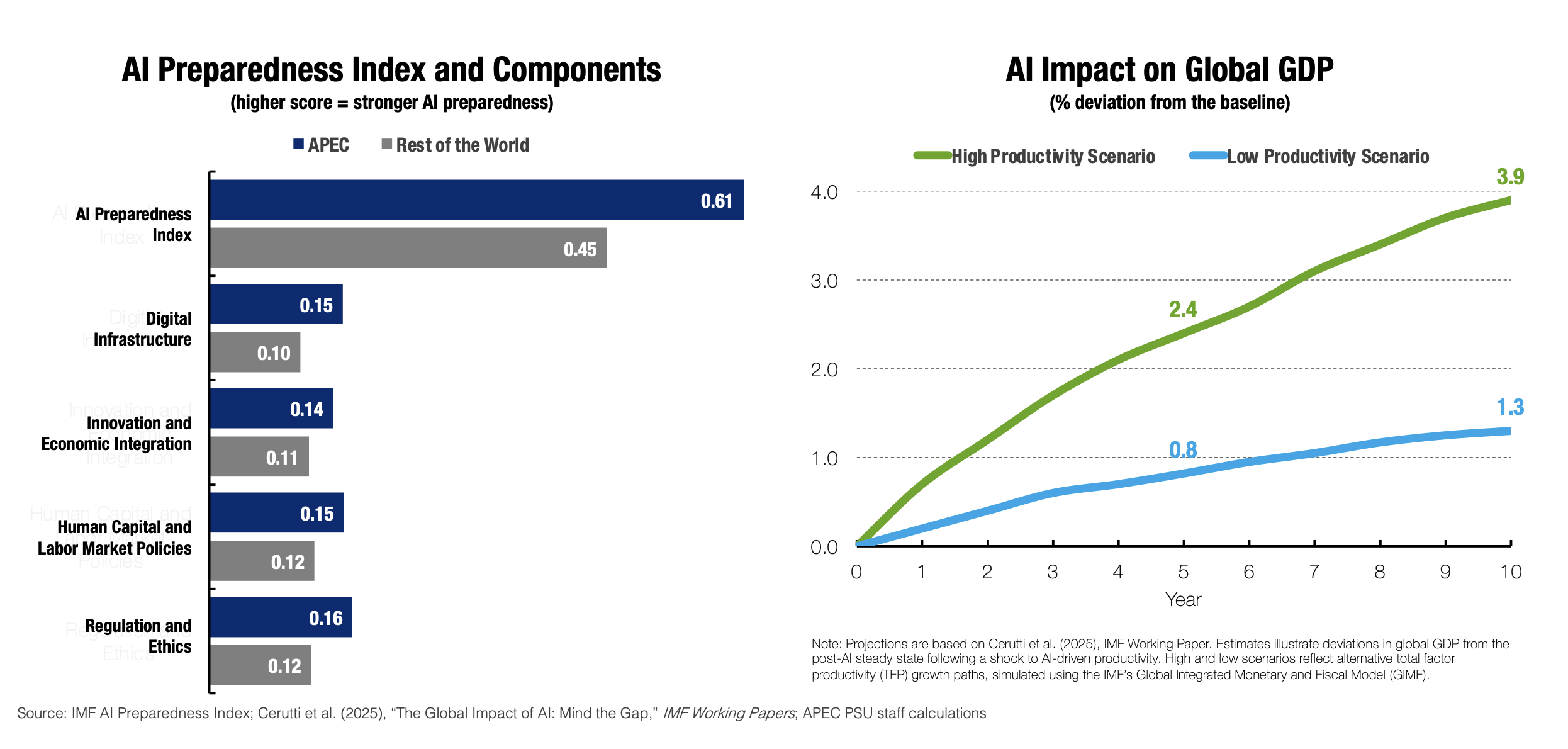
Still, digital capacity remains uneven across the region, with persistent gaps in digital skills limiting broader adoption. Closing these gaps will be key to unlocking AI's full economic potential and ensuring that its benefits reach all people, across communities, sectors and economies.
Policy Priorities: Strengthening Confidence, Harnessing Digital Gains
With growth moderating and uncertainty still elevated, APEC economies must walk a fine line, preserving near-term macroeconomic stability while advancing structural transformation. Tackling current headwinds and fostering innovation to lay the foundation for sustained growth that benefits the entire population will require coordinated policy action across three key areas:
Inclusive Structural Reform: Advance labor market reforms and scale up digital skills development to strengthen human capital and ensure that the benefits of AI-driven productivity are widely shared.
Adaptive Economic Policy: Maintain flexible macroeconomic frameworks, rebuild fiscal space, and channel investment toward sectors that boost productivity to support adjustment and resilience.
Coordinated Regional Cooperation: Use APEC's platform to align responses to shifting global environment, reinforce regional economic stability, and deepen integration through sustained dialogue.
As APEC economies navigate persistent global uncertainty, it is important to strike a careful balance between policy responses that yield short-term gains and structural reforms that drive enduring momentum and productivity growth.
Regional cooperation is indispensable in today's uncertain environment. APEC as a regional platform must continue to foster open dialogue, align policies, and coordinate responses to shared challenges. Clear direction and consistent collaboration are vital to managing risks and supporting durable, innovation-driven growth.
Rhea Crisologo Hernando is analyst, Glacer Niño A. Vasquez is researcher, and Carlos Kuriyama is director at the APEC Policy Support Unit.
For more on this topic, download the latest APEC Regional Trends Analysis report.






